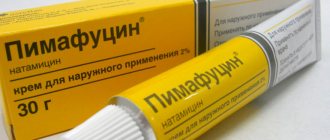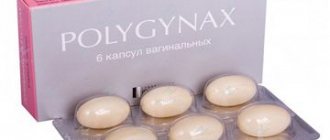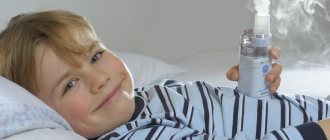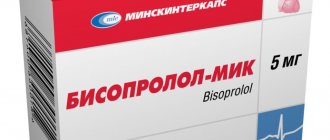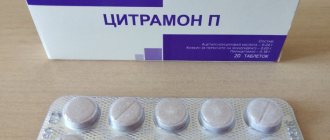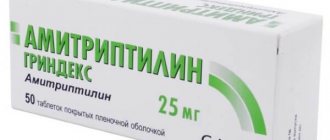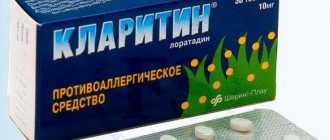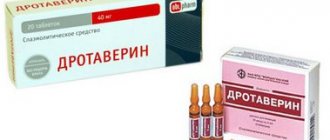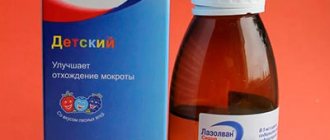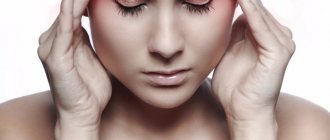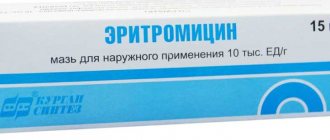The effect of inhalation with a nebulizer
A special device for inhalation at home, with the help of which medicinal solutions are introduced into the upper respiratory tract by an aerosol method, is called a nebulizer. During the procedure, the following therapeutic effects are achieved:
- moisturizing mucous membranes, restoring damaged tissues due to stimulation of vascular microcirculation;
- removal of swelling;
- destruction of pathogenic microorganisms;
- expansion of the bronchial lumen;
- thinning of sputum;
- stimulation of the expectoration process;
- stopping the inflammatory process.
A positive result is achieved subject to a number of rules for using the nebulizer. To achieve maximum therapeutic effect, you must adhere to the following principles:
- Use only medications prescribed by a doctor, in the indicated dosages and according to the developed regimen.
- To prepare solutions, use sterile saline solution (using water can provoke bronchial spasm in the patient).
- Do not use oil solutions.
- Do not mix several medications. The interval between procedures using different means should be at least 15 minutes.
Indications and contraindications for the use of nebulizer therapy
Nebulizer therapy is used for the following conditions:
- ARVI;
- pneumonia;
- bronchial asthma;
- chronic obstructive pulmonary diseases;
- respiratory tuberculosis;
- bronchiectasis;
- cystic fibrosis;
- in the postoperative period for prophylactic purposes (prevention of the development of hypostatic pneumonia).
The following conditions are contraindications to the use of a nebulizer:
- Spontaneous pneumothorax;
- pulmonary hemorrhage;
- heart failure in the stage of decompensation;
- severe heart rhythm disturbances;
- allergy to drugs used for inhalation treatment.
Inhalation technique
The nebulizer for bronchitis must be prepared before use (assembled, filled with medicinal solution, checked for functionality). After the device is ready for use, a mouthpiece or mask is connected to it, the procedure is carried out according to the following algorithm:
- The patient needs to be seated or placed next to the device in a comfortable position, put on a mask or insert a mouthpiece into the oral cavity.
- During the procedure for bronchitis, the patient needs to breathe calmly and deeply through the mouth when inhaling, exhaling through the nose and holding the breath while inhaling for a couple of seconds.
- Inhalation is carried out until the solution is completely finished (from 7-10 minutes to half an hour, depending on the type of drug and treatment regimen). If dizziness or other discomfort occurs, the procedure can be paused for a few minutes.
Inhalations using a nebulizer
The device for inhalation is called a nebulizer. This device sprays the active substance so that its microscopic particles pass to each respiratory organ and the path leading to them, and as a result, the absorption of the drug by the mucous membrane occurs quickly and completely.
This compressor or ultrasonic inhaler has an undeniable advantage: it is suitable for the treatment of bronchitis in adults, children and even infants. It is designed in such a way that a powerful directed air flow or ultrasound breaks down medications passing through the nebulizer into an aerosol.
Compared to steam inhalations, this method is certainly more effective, but only pharmaceutical medications are suitable for the device. Essential oils, decoctions of medicinal plants, infusions and other alternative medicines are prohibited from being poured into them.
Inhalation with a nebulizer for bronchitis is easy to carry out. A special solution is placed in a glass, to which a tube is connected, and at its end there is either a mouthpiece or a respiratory mask. The first version of the tip is more suitable for adults, and the second - for small children, it is much more convenient.
It is impossible to burn yourself with any inhalation medicine for bronchitis, since the mucous membranes are not exposed to hot air, the spraying process is carried out by the device itself, so no boiling water is required.
It is important to clean the device regularly after each use, because a dirty device will eventually become useless, or even harmful, due to the bacteria that have accumulated in it.
Nebulizer medications for bronchitis
During bronchitis, doctors prescribe solutions with drugs from different pharmacological groups. The selection of medications depends on the causes of inflammation (for example, for a bacterial infection, a course of antibiotics is indicated), the symptoms that appear (non-productive cough is treated with mucolytics, bronchospasms are relieved by bronchodilators, etc.). Self-medication and incorrect selection of medication may worsen the patient’s condition, so it is necessary to consult a doctor.
Bronchodilators
Solutions with drugs of this group expand the bronchial lumen and relieve spasm. Inhalations are indicated for chronic obstructions accompanied by attacks of suffocation. Effective drugs:
- Atrovent;
- Ventolin:
- Berotek;
- Berodual;
- Fenoterol.
Articles on the topic
- Nebulizer medicines for coughs - a list of effective solutions for children and adults
- Nebulizer solutions for a runny nose - a review of the best drugs for inhalation
- Nebulizer for inhalation - review of the best devices with description, instructions and price
Mucolytics
The drugs in this group help to liquefy mucus and remove it from the respiratory tract, relieving inflammation. Indicated for dry cough during bronchitis, laryngitis and ARVI; plant-based products containing extracts of medicinal herbs are recommended. Effective drugs:
- Ambrobene;
- Lazolvan;
- Gedelix;
- Mukaltin.
Antibiotics
Solutions containing antibiotics for the nebulizer for bronchitis are prescribed during the bacterial purulent form of the disease. Drugs from the groups of cephalosporins, macrolides, and penicillins are effective. Possible destination options:
- Flemoklav Solutab;
- Fluimucil;
- Azithromycin;
- Chlorophyllipt.
Anti-inflammatory and hormonal drugs
Solutions with hormonal active ingredients are prescribed mainly to adult patients, often for bronchial asthma. The active ingredients of such drugs (glucocorticosteroids) relieve swelling and inflammation, allergic manifestations, and reduce mucus production. An effective drug is Pulmicort in combination with bronchodilators. Anti-inflammatory solutions relieve inflammation. Recommended herbal products:
- Rotokan;
- Eucalyptus;
- Malavit.
Antihistamines and immunomodulators
Antiallergic drugs with antihistamines are indicated for bronchial asthma to prevent complications of an allergic reaction. Their components relieve swelling of the mucous membranes and reduce the production of allergy mediators. An effective remedy is Cromohexal and its analogues. Immunomodulatory drugs are indicated for viral infections, to stimulate general and local immunity. Destination options:
- Interferon;
- Derinat.
Advantages of the procedure over other treatment methods
Administration of medicinal substances by inhalation has a number of advantages compared to parenteral or oral administration.
One of the main advantages is the rapid absorption of the components used. Oral drugs enter the bloodstream only from the intestines, and the loss of the active substance can reach 50% or more.
Medicines entering the body by inhalation are absorbed 20 times faster than any tablets.
The maximum concentration of the active substance is observed directly in the pathological focus (affected organ and tissues). This allows you to quickly deal with the virus right in the replication zone.
Important to know: Chronic bronchitis: contagious or not
Solutions for inhalation for bronchitis in children
Inhalations using a nebulizer for childhood bronchitis can be done from six months, strictly as prescribed by the doctor.
. Before using drugs from different groups, it is important to clarify the age restrictions in the instructions for use of the drug. Procedures with saline or saline solution are allowed without a medical prescription. Depending on the symptoms and age of the child, the following medications are prescribed:
- Dry non-productive cough: Ventolin, Atrovent – from 6 months; Berodual - from 6 years; Salbutamol, Berotek - from 4 years.
- Mild wet cough: Ambrobene, Bronchipret - from 6 months.
- Purulent inflammation: Fluimucil – from 2 years; Chlorophyllipt – from 3 years.
Antiseptics
Drugs in this group are intended to get rid of the inflammatory process, which is one of the components of any form of bronchitis. Furacilin, Chlorhexidine, Miramistin or Rotokan can be used as medications.
Important! As for Miramistin, its main advantage is the fact that it can be used for inhalation for bronchitis in children up to one year old, as well as in pregnant and lactating women. You can use it in the traditional way by filling it in a nebulizer in its pure form.
Rotokan is a herbal remedy that contains calendula, chamomile and other ingredients. Inhalations of Rotokan for bronchitis can be done in the following proportion - 1:40 (1 ml of Rotokan and 40 ml of saline solution).
When is the procedure contraindicated?
The answer to the question whether it is possible and whether it is worth doing inhalations for bronchitis may turn out to be ambiguous. If the patient has problems with the cardiovascular system, then inhalation is prohibited. In addition, various lung pathologies, such as emphysema, are direct contraindications to these procedures.
Important! Is it possible to do hot inhalation, like in the old days, when mom filled the kettle and children breathed under a towel to help dilate the bronchi and remove mucus. Once upon a time, in the treatment of obstruction, it was possible to do without hormones and other drugs, but today the choice of a specific means for inhalation is the prerogative of the attending physician, so self-medication is clearly not worth it.
An incorrectly selected medicine, as well as failure to comply with the rules of inhalation therapy, can lead to a worsening of the condition and a burn of the mucous membrane. To use a can of pocket aerosol, you need to correctly calculate the dosage and agree with the doctor on the composition of the product.
Similar articles
Is it possible to go outside with the baby after inhalation with a nebulizer?
How to perform inhalations for a wet cough
Breathe over potatoes correctly
Nebulizer therapy and its features
Inhalation for a runny nose with a nebulizer
Previous article
How to perform inhalations for a wet cough
Next article
Advertisements
Contraindications
Treatment of bronchitis with inhalations has limitations. You should not use essential oils too often, otherwise the effect may be reversed.
Inhalations using boiling water are prohibited for children, because their mucous membrane is more vulnerable.
After the procedure, you cannot talk or eat for 1 hour. It is necessary to refuse treatment if there is intolerance to one of the medicinal components. If pus or blood discharge is detected in the sputum, it is better to postpone inhalation.
